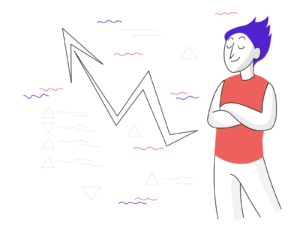Competitive analysis can seem like an intimidating task to take on, but by doing so you can stay one step ahead of your competitors and create strategies that will strengthen your business’s position in the market. It’s also an important exercise because it helps you understand who you’re up against and what you can do to make your own business better, not just from an operational standpoint but also from a value-added one as well. Here are five reasons why competitive analysis is so important for any company, no matter how big or small it may be.
What is competitive analysis?
In a nutshell, competitive analysis is the process of understanding the strengths and weaknesses of your competitors. It’s important because it will help you understand how your business stacks up against theirs. This can also help you better understand what they’re doing that’s working (and what isn’t) so that you can improve your own company. Another benefit of performing an effective competitive analysis is that it provides insight into where you need to spend more resources in order to compete. You’ll be able to spend less time guessing which strategies might work, and instead invest those resources where they’ll have the most impact.
The benefits of competitive analysis
Businesses always have competitors in the market, but many do not take the time to analyze their competition. A competitive analysis can help you understand your competitors, their weaknesses and strengths, as well as what you need to work on. It will also help you understand your customers better by understanding where they are getting your competitors’ products or services from. This type of analysis will allow you a more thorough understanding of what is happening in your industry so that you may be better prepared for future challenges. Additionally, a competitive analysis helps build strategies to increase sales and make product improvements. The primary goal of this analysis is to strengthen your business and stay ahead of the game!

Awareness
Brand awareness is an inevitable part for any brand to generate demand across their business journey

Visibility
Being more visible to the target audience is the a key factor that accelerate demand.
How to conduct a competitive analysis
The first step in conducting a competitive analysis is to look at your competitors. This entails identifying who they are, what they offer, how you compare, and the strengths and weaknesses of their business. Once you have this information, you can evaluate how strong your position is relative to theirs. From there, you should work on either strengthening your position or choosing an alternate course of action.
1. Compatitor Keyword Research
Use competitor keyword research tools like SEMrush, Google Adwords, or Moz’s Site Explorer to find keywords that your competitors rank for in search engines. You can use these results to create a list of keywords that you want your business website or blog posts to rank for. Keyword lists are often shared by different companies so if you start seeing the same words popping up again and again then it is likely they are words people are searching for on the internet. By finding out what your competitors rank for, you can see what keywords have high traffic volume so that when writing articles or optimizing pages on your site, you know which ones to target.
2. Compatitors Keyword Branding
The best way to understand your competitors is through a competitive analysis. This will help you understand how well your business stacks up against the competition, as well as what differentiates you from other businesses. You can also use this information to develop strategies for strengthening or improving areas of your business that are weaker than the competition. For example, if you find out those customers prefer your competitor’s customer service; you might want to consider training employees on better customer service skills in order to improve that aspect of your business.
3. Your competitor publish what and where is important
Your competition is always looking for ways to make your life difficult, so you need to know what they’re doing. If you can identify a competitor’s weaknesses, this will give you an idea of where you can better position your product. Competitive analysis (or competitive intelligence) also helps you create strategies that are more effective than your competitors. It provides valuable information about how to develop or improve the products or services you offer in order to gain market share. The level of detail that should be included in your analysis depends on the type of business you run and the extent of its competitiveness. Smaller businesses with less direct competition might be able to get by with less intense research than larger companies with many competitors and/or tight margins.
Catapult Brand Demand with Strategic Content Marketing
Having a content-first approach helps you to create the authority in the sector and generate demand for your brand.
Contact Our Content Manager Now4. Buyers of your compatitors product
Buyers of your competitors’ products are your compatitiors. A competitive analysis will help you understand who they are, how they behave, what they buy, why they buy it, and how much they spend. What’s more, the information is crucial for determining what price point to set for your product or service. The lower the competition, the higher your pricing can be; but if there are many buyers with similar needs as yours, then a low pricing point will attract them. If this sounds familiar, think about when you go shopping in a store. There may be only one cashier working and everyone is trying to get their items scanned before they run out of patience. The same thing goes on with your business-you need to know where you fit into the market!
5. From where your compatitor generating lead?
Leads can come from anywhere, but they often come from the same places as your competitors. To understand your competitors better, you should take a look at where they are generating leads. One way to do this is by analyzing their website for calls-to-action, or CTA’s. You might also want to see what kind of content they’re posting on social media accounts or if there’s anything on their blog that could be driving traffic back to their site. There are so many different ways that you can find out where your competitor is getting his lead generation from, but it takes some time to figure out which one will work best for you.
Conclusion
Competitive analysis is important because it allows you to understand your competitors and strengthen your business. To start competitive analysis, you need to decide what data points you want to look at first. There are four main categories of data points that are important in a competitive analysis: industry-specific data points, competitor specific data points, customer specific data points, company specific data points. Each data point provides different insight into the competition and how they can be analyzed. Once you have chosen the data points that will provide the best information for understanding your competitors, evaluate them to see how they compare to your own organization’s performance.
Finally, using this information strategically will help improve your company’s overall performance.
Reviewed By
SOJY is a Growth Marketing Strategist with proven expertise in Marketing Psychology, Performance marketing and SEO with over 7 years of experience in the industry. With a passion for helping businesses grow, he has a track record of success in developing and executing innovative marketing strategies that drive growth and ROI.
-
Sojy SNhttps://blog.algorithmc.com/author/sojy/
-
Sojy SNhttps://blog.algorithmc.com/author/sojy/
-
Sojy SNhttps://blog.algorithmc.com/author/sojy/
-
Sojy SNhttps://blog.algorithmc.com/author/sojy/




